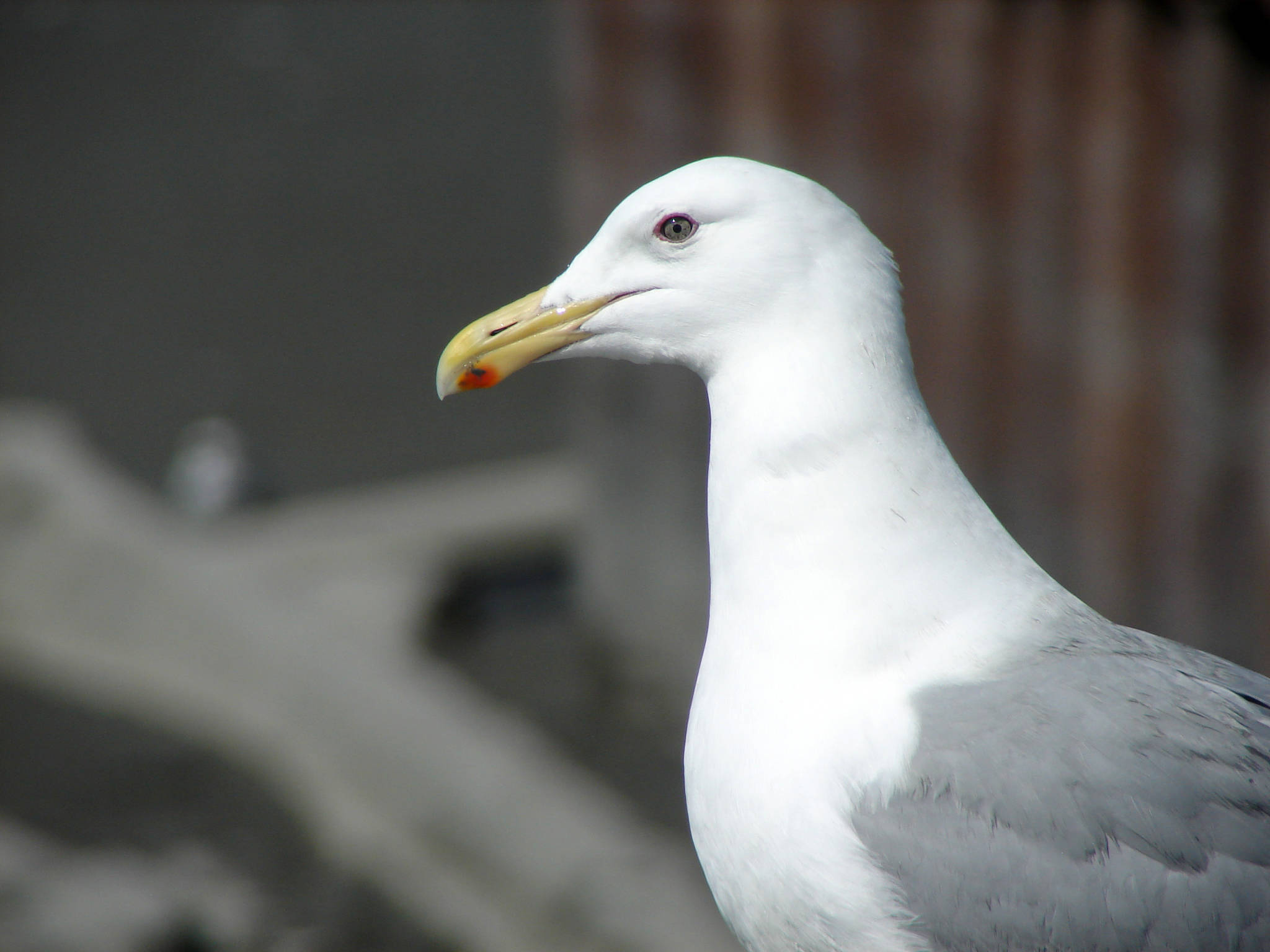By JOHN MORTON
There are lots of “seagulls” flying around the Kenai Peninsula. At the mouth of the Kenai River alone, more than 30,000 Herring and Glaucous-winged gulls have taken up residence!
Have you ever stopped to really look at one? Have you noticed the red dot near the tip of the lower bill? Have you ever wondered why it is there?
If you answer yes to these questions, then you’ve got the hallmarks of a good naturalist. If you choose to research it, you’re on the path to being a scientist. If you take it so far as to conduct experiments, you might even win a Nobel Prize.
That’s precisely what happened to Nikolaas (Niko) Tinbergen. This Dutch ornithologist, a professor for many years at Oxford University, was co-awarded the Nobel Prize in Physiology or Medicine in 1973 partly for figuring out what that red dot does.
Gull nestlings peck at the red dot to get their parents to regurgitate food to them. But this relationship is much more complex than that.
During the summer of 1946, right after World War II ended, Dr. Tinbergen and his students used gull dummies (cutouts and plaster effigies) to investigate which stimuli gull chicks responded to the most. By varying the color, contrast, head shape, bill shape, and the position and “lowness” of the bill, Tinbergen was able to demonstrate that this innate behavior of pecking was elicited by the red color of the dot contrasted against the yellow bill.
Tinbergen used this information to see if he could improve on nature. He created a “supernormal” stimulus by painting three white rings at the end of a long red rod. This abstract dummy received 26 percent more pecks than a three-dimensional, realistic plaster model of a gull’s head and bill.
“Big deal,” you might say disparagingly. Tinbergen shared this Nobel Prize with Karl von Frisch and Konrad Lorenz, who figured out how bees communicate by “dancing” and how goslings imprint on their goose parents, respectively.
All three biologists showed how some behaviors are innate or genetically programmed (as opposed to learned), triggered by specific key stimuli. Collectively, these three founded the modern field of ethology, or the study of animal behavior.
The press release for this Nobel Prize addresses the significance of these scientists and their work to the rest of humanity: “Man is [also] equipped with a number of fixed action patterns, elicited by specific key stimuli. This holds true for the smile of the infant and for the behavior of a mother to her newborn child.
“Psychosocial situations leading to conflicts, for example as a result of disturbances of the social organization of an animal society, may lead both to abnormal behavior and to somatic diseases such as hypertension and myocardial infarction. Research within these fields has led to important results, for example psychiatry and psychosomatic medicine, especially as regards possible means of adapting environment to the biological equipment of man with the aim of preventing maladaptation and disease.”
In his Nobel Lecture, Dr. Tinbergen addressed the unorthodox decision of awarding this prize to three men who had previously been regarded as “mere animal watchers.” Tinbergen stated that their revival of the “watching and wondering” approach to studying behavior could indeed contribute to the relief of human suffering.
I encourage you to read The Herring Gull’s World (1960), a book written by Dr. Tinbergen in such an engaging way that even the nonscientist can appreciate the wonder of gull behaviors. And take notice the next time you see a gull (or a goose or a bee) in your wanderings on the Kenai Peninsula — there’s certainly more there than meets the casual eye.
Dr. John Morton is the supervisory biologist at Kenai National Wildlife Refuge. Find more Refuge Notebook articles (1999-present) at https://www.fws.gov/Refuge/Kenai/community/Refuge_notebook.html.

